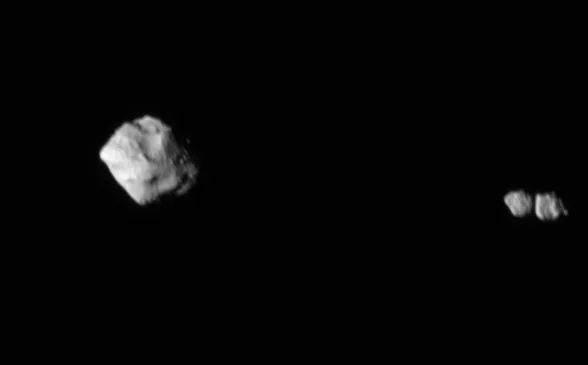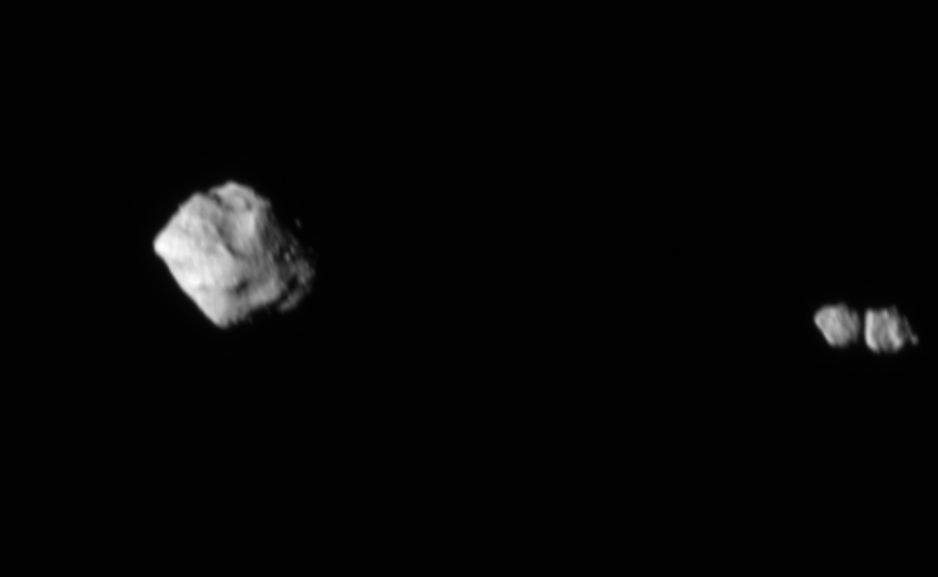There are millions of asteroids floating around the solar system. With so many of them, it should be no surprise that some are weirdly configured. A recent example of one of these weird configurations was discovered when Lucy, NASA’s mission to the Trojan asteroids, passed by a main-belt asteroid called Dinkinesh. It found that Dinkinesh had a “moon” – and that moon was a “contact binary”. Now known as Selam, it is made up of two objects that physically touch one another through gravity but aren’t fully merged into one another. Just how and when such an unexpected system might have formed is the subject of a new paper by Colby Merrill, a graduate researcher at Cornell, and their co-authors at the University of Colorado and the University of Bern.
Continue reading “Finding The Age Of A Contact Binary “Moon””The New Asteroid Moon Discovered by Lucy Just Got its Own Name

When NASA’s Lucy mission flew past asteroid Dinkinesh on November 1, 2023, it made the surprising discovery the asteroid had a tiny moon. Then came another surprise. This wasn’t just any moon, but a contact binary moon, where two space rocks are gently resting against each other. Of course, this new and unique moon needed a name, so the International Astronomical Union (IAU) has just approved approved “Selam,” which means peace in Ethiopia’s language.
But, everything’s connected here. Dinkinesh is the Ethiopian name for the Lucy fossil, and Selam is named after another fossil from the same species of human ancestor.
Continue reading “The New Asteroid Moon Discovered by Lucy Just Got its Own Name”
